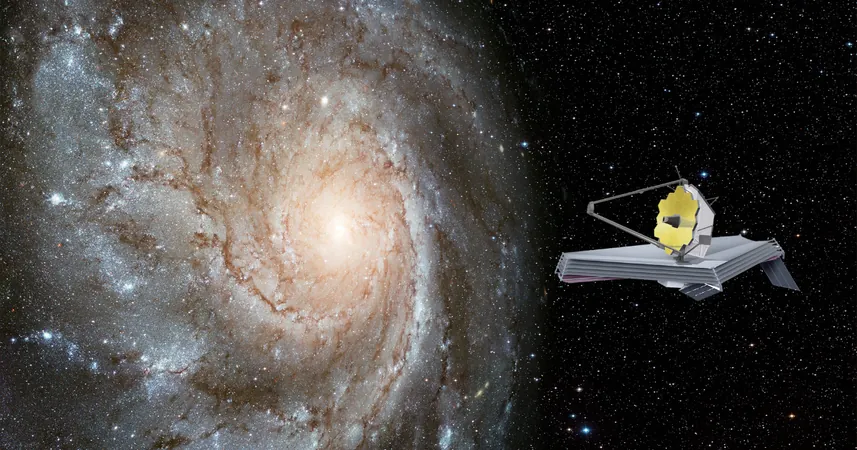
Astounding Discovery by James Webb Space Telescope: Hundreds of Red Dots Found in Early Universe, Astrophysicists Stumped!
2024-11-16
Author: Jacob
Astounding Discovery by James Webb Space Telescope
The James Webb Space Telescope (JWST) continues to amaze astronomers with its groundbreaking discoveries and stunning imagery of the cosmos. Recently, it cast its gaze on one of the oldest regions of the observable universe, leading to a puzzling revelation: hundreds of seemingly tiny galaxies are appearing as enigmatic little red dots in its findings.
Mystery of the Red Dots
Astrophysicists are scratching their heads trying to understand what these red dots signify. Depending on how they are analyzed, these celestial structures exhibit different characteristics, adding layers of complexity to their identification. As explained by renowned astrophysicist Fabio Pacucci from the Smithsonian Institution, these dots are surprisingly small when compared to typical galaxies, measuring roughly 2% the size of our Milky Way.
Compelling Theories
One compelling theory posits that these red dots could represent a collection of densely packed stars, possibly containing a stellar population equivalent to that of the Milky Way despite their smaller size. If substantiated, this would redefine our understanding of galactic formation. Pacucci poignantly remarks, “These astrophysical objects may be the densest stellar environments in the entire universe.”
Another intriguing hypothesis suggests that these dots might be supermassive black holes, each surrounded by their own star systems. However, this theory raises eyebrows as it implies that these black holes would need to be larger than previously deemed possible, challenging current astrophysical principles.
Transient Existence
A particularly fascinating aspect of these little red dots is their transient existence in the grand timeline of the universe. Astronomers speculate that they emerged approximately 600 to 800 million years post-Big Bang and persisted for around one billion years. This brief window poses essential questions about the evolution of cosmic structures during the early epochs of the universe.
The Role of JWST
As scientists continue to explore these captivating formations, the JWST remains a vital tool in astrophysics, often generating more questions than it answers. This discovery is just one of many that highlight the JWST's capacity to push the boundaries of what we know about the universe, leaving both researchers and enthusiasts excited for what’s to come.
Conclusion
Stay tuned as we await further analysis and insights that could shed light on these mysterious little red dots and what they reveal about our cosmic history!









 Brasil (PT)
Brasil (PT)
 Canada (EN)
Canada (EN)
 Chile (ES)
Chile (ES)
 España (ES)
España (ES)
 France (FR)
France (FR)
 Hong Kong (EN)
Hong Kong (EN)
 Italia (IT)
Italia (IT)
 日本 (JA)
日本 (JA)
 Magyarország (HU)
Magyarország (HU)
 Norge (NO)
Norge (NO)
 Polska (PL)
Polska (PL)
 Schweiz (DE)
Schweiz (DE)
 Singapore (EN)
Singapore (EN)
 Sverige (SV)
Sverige (SV)
 Suomi (FI)
Suomi (FI)
 Türkiye (TR)
Türkiye (TR)